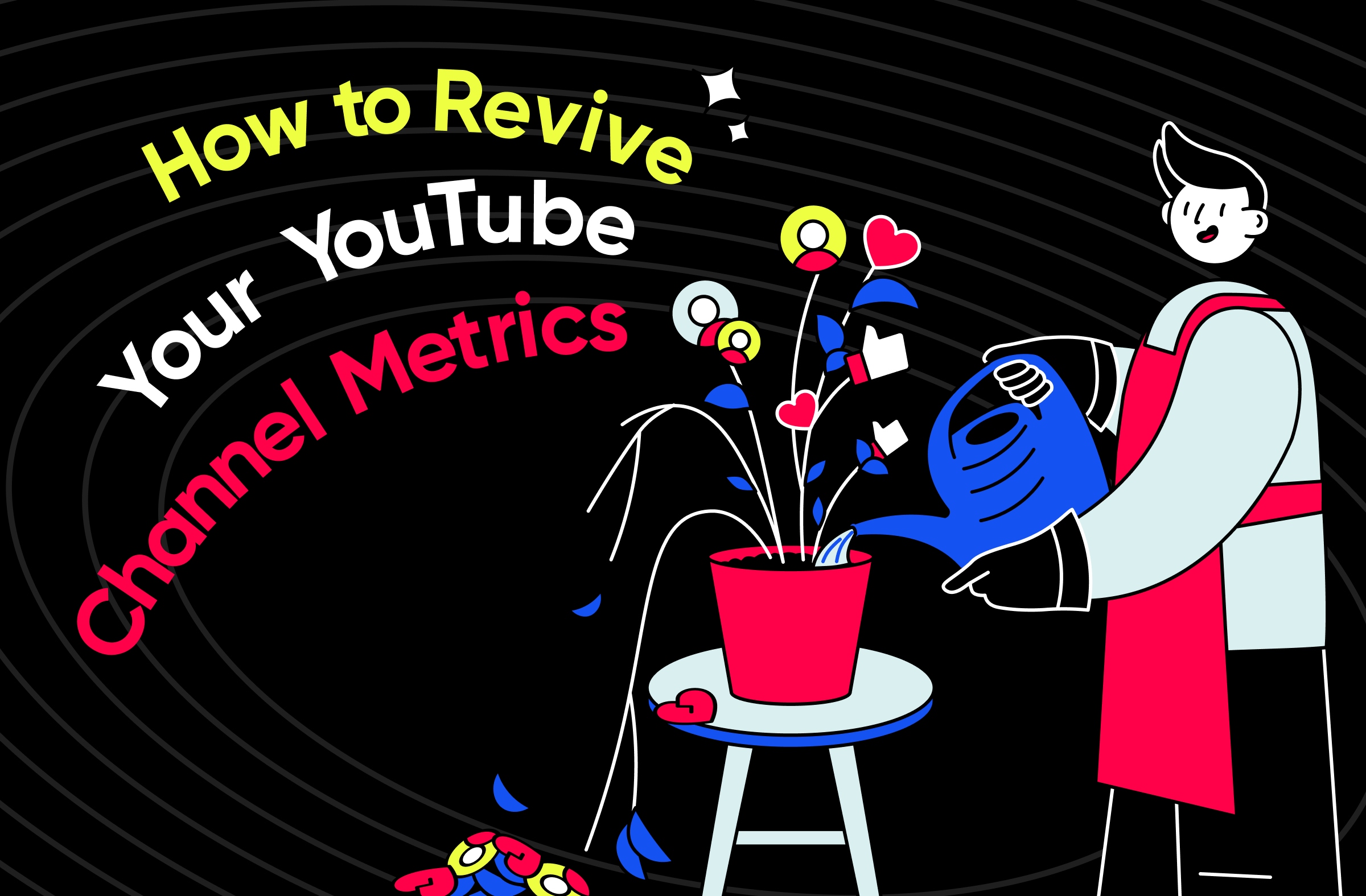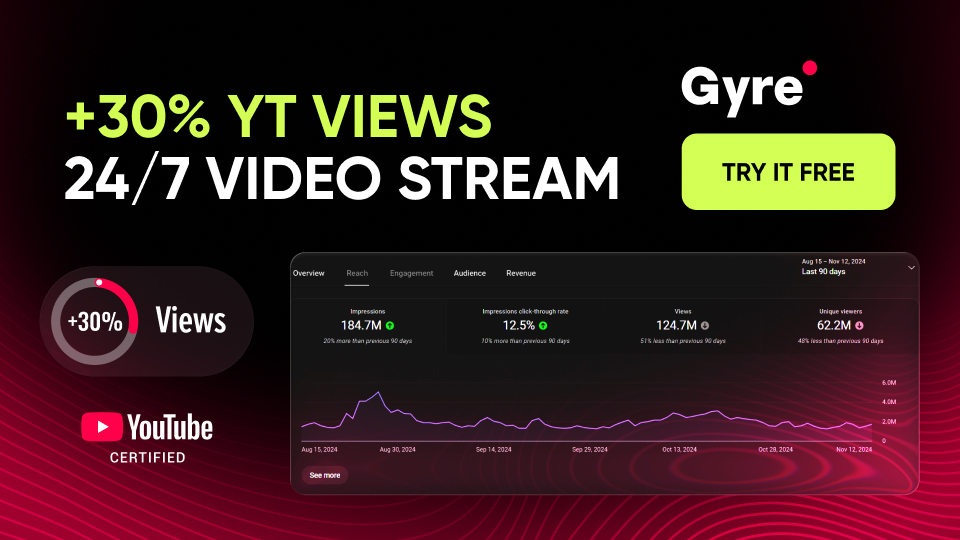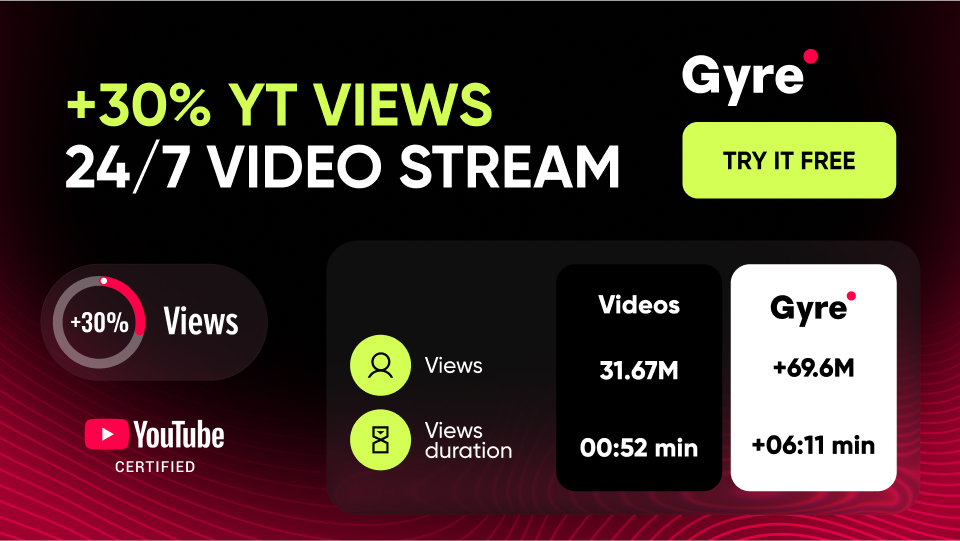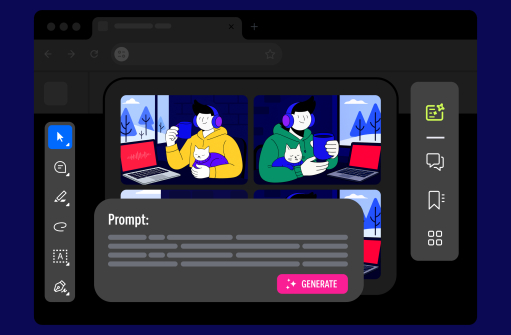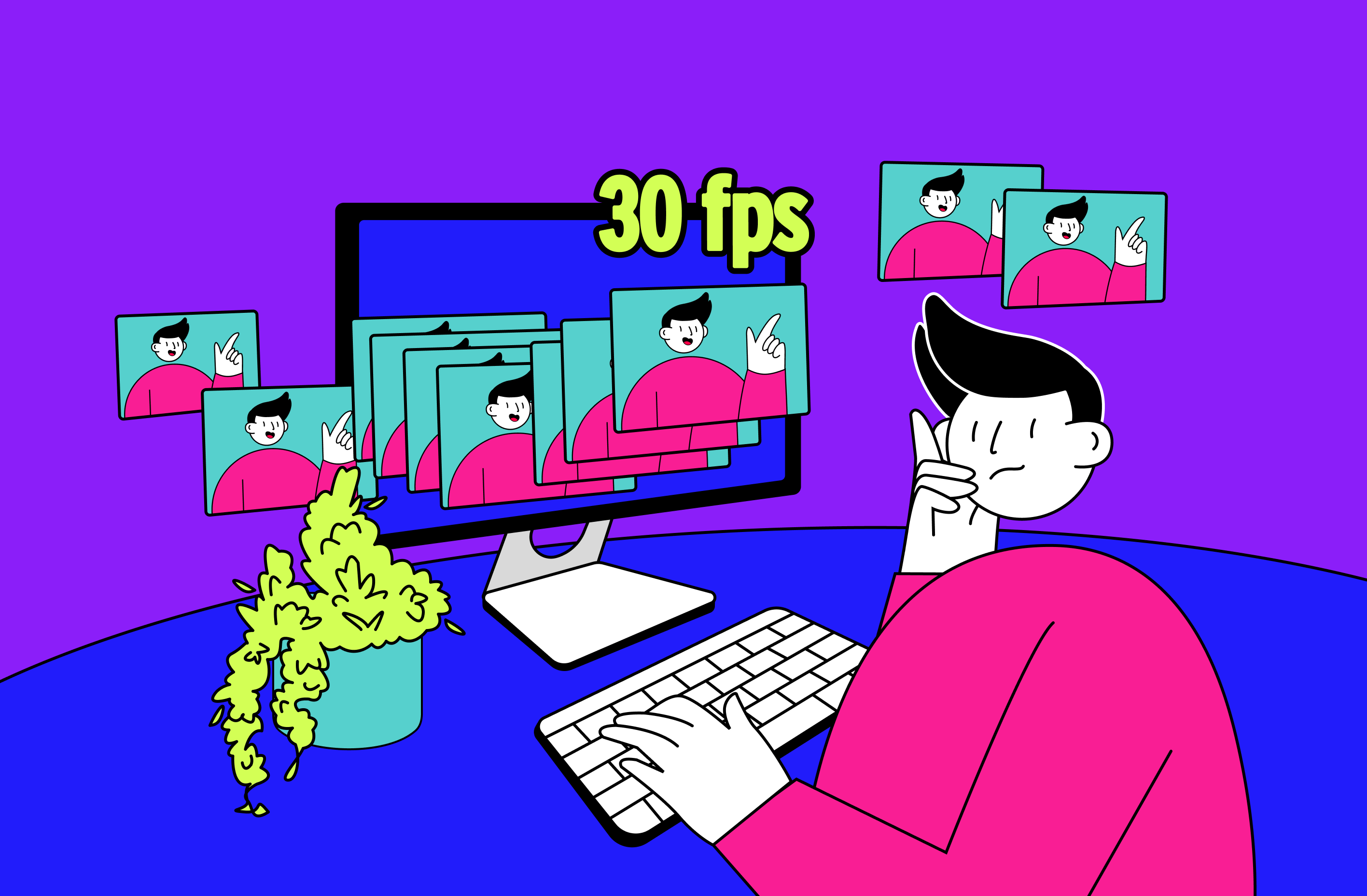What is happening, and how can you figure out the reason? Most importantly, what can you do to increase channel statistics again? That’s what we analyze in detail in this article.
YouTube KPIs You Should Be Tracking
The number of subscribers and views has long ceased to be the key indicators for the success of a YouTube channel. You can now monitor the data of more than ten metrics in analytics. They give a comprehensive report about your content's current status and show the dynamics of its development. Here are some of the metrics:
- Number of views
- Number of subscribers
- Total viewing time
- Average percentage viewed
- Average view duration
- Audience retention
- Unique viewers
If new video content is released regularly, the optimal outcome is to see sustainable numbers gradually growing among the analytics indicators. Yes, some videos can go viral and cause viewer and subscriber numbers to skyrocket. But if you look at the statistics for 28 days, three months, or even a year, you will likely see a roughly flat graph with insignificant deviations.
When you measure a YouTube channel's success, it’s essential to look at metrics comprehensively and track their ratio. Indicators may differ depending on the channel topic, geographical area, and age characteristics of the target audience, but on average, they will be as follows:
- Engagement rate (ERR) = comments / total video reach * 100%. The optimal ratio is 0.5%. For example, if a video has 10,000 views, a good indicator of audience engagement would be at least 50 comments on the video.
- The popularity of your videos is the ratio of likes to the number of views. The optimal indicator is 40 likes for every 1000 views.
- The ratio of the number of channel subscribers to views. On average, this indicator should be about 14%. If your channel has 100,000 subscribers, the videos should get an average of 12,000-15,000 views.
Reasons Why Your YouTube Channel Is Not Growing
Okay, we’ve figured out the ‘best case scenario.’ But what if the situation is the opposite? There can be many reasons why your channel statistics have suddenly dropped. We can organize the roots of the problem into three large groups:
- The interaction between the channel author and viewers — your content no longer attracts subscribers; you communicate minimally; your interactions with the audience are not attractive.
- Internal optimization and factors that attract viewers to your channel — poor video optimization, lack of collaborations with other channels, irregular publication of new content, and your viral videos have lost reach and no longer sustain the channel.
- Interaction with the YouTube platform — your channel developed a seasonal decline, the algorithms changed, your videos violated the community rules, and YouTube stopped actively promoting them.
This list could go on and on. The indicators of each YouTube channel are unpredictable in their way. Meanwhile, "reviving” a channel can be a long and creative process. However, there is a basic algorithm of actions you should try to restore your YouTube channel statistics.
How To Resuscitate A YouTube Channel
Analyze the niche and competitors
The first and most crucial step is to analyze what is happening in your niche. Prepare a list of 10-20 channels on similar topics: 5 should be big channels, and the rest should be average in size.
Next, analyze the features of the content on each of the selected channels:
- Which topics are successful?
- Which video format gets the most views?
- Which video covers are most often used by authors?
- What is the video title and description?
- Which tags and keywords do creators use in these videos?
You will receive a selection of practical mechanics for creating video content worth trying on your channel.
IMPORTANT! It’s easier to track trends on average-sized channels. Large channel audiences are less demanding — responding to updates and absorbing any content published by the creators with millions of followers.
Check the content format and presentation
Since your channel already has some history of engagement with viewers and subscribers, you can pinpoint what content they like through YouTube Studio's analytics. What can you check?
- In the "Top content period" section, see the number of views and the average viewing time of individual videos.
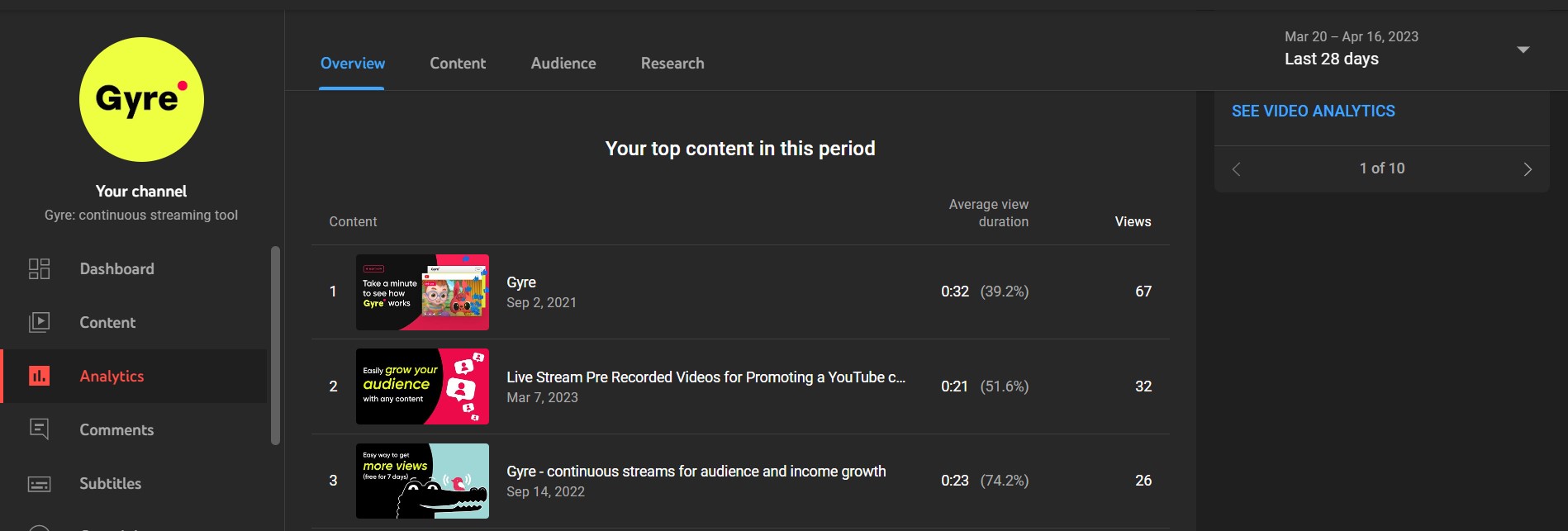
- In the "Audience" section, find out which videos bring new viewers back to the channel.
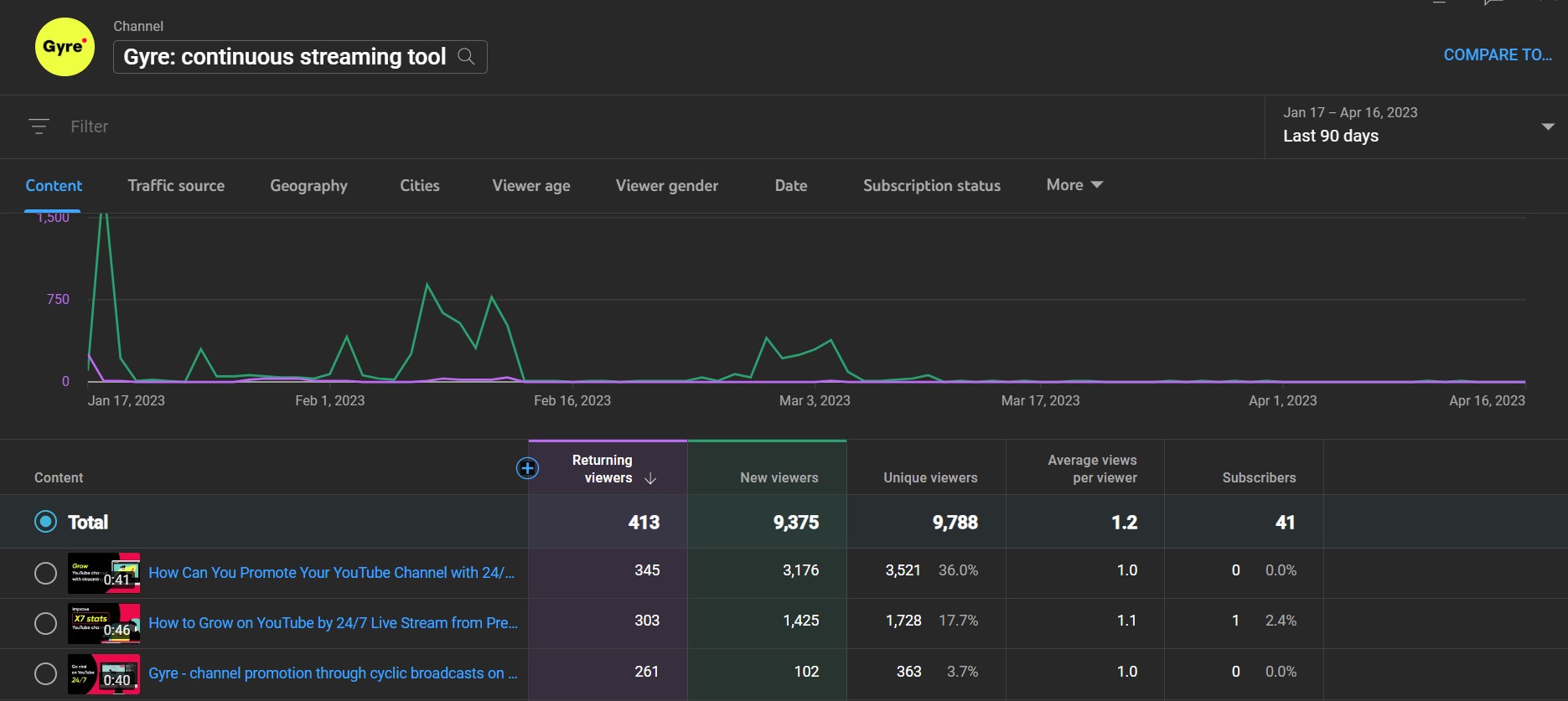
- View the real-time analytics for each popular video and determine when viewers stop watching the video.
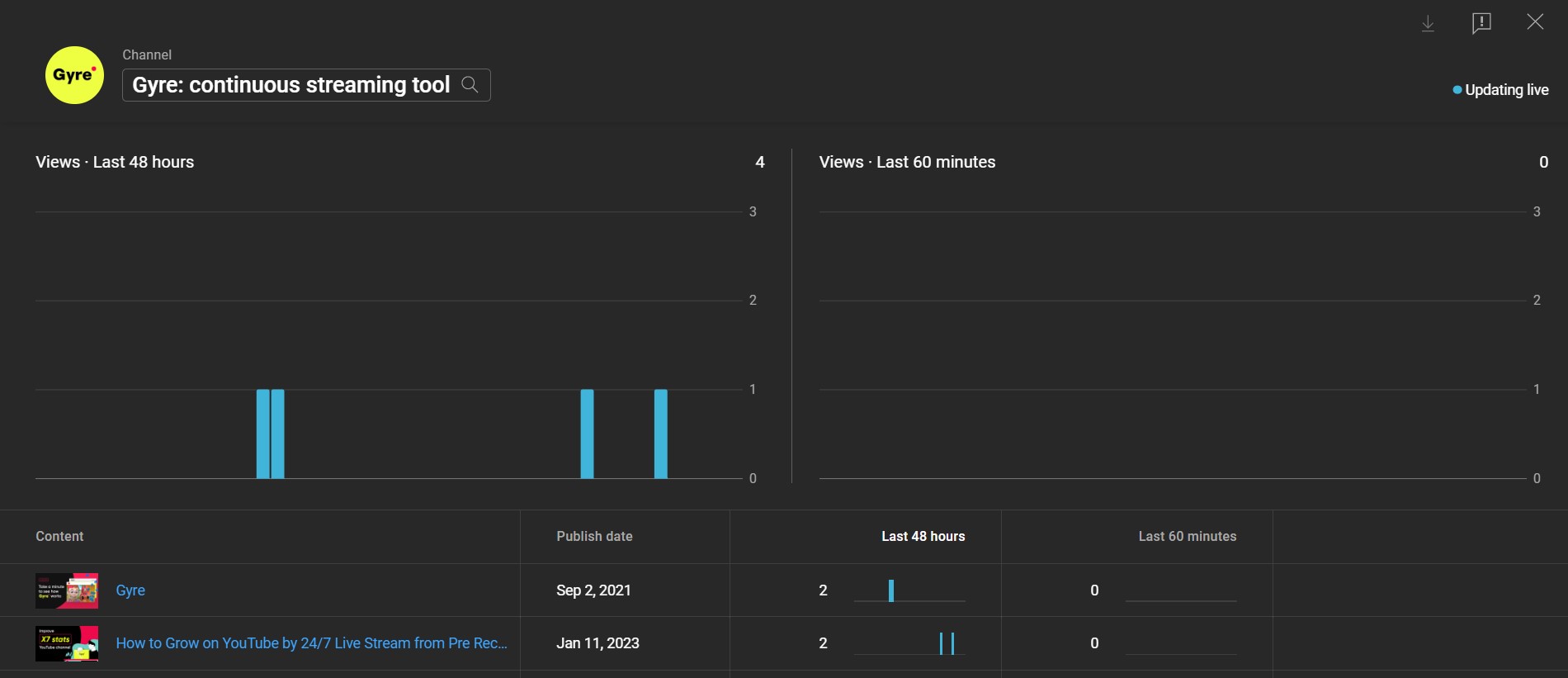

- Then return to the "Overview" section. Select "See more." You should be able to view now expanded statistics, to which you should add the "Subscribers" secondary metric. For example, if you want to view analytics for the last year, you will see which topics resulted in the maximum number of channel subscribers and views.

- Also, in advanced analytics, look at the "Traffic Source" tab — "YouTube Search.” Here you can find queries viewers typed into the search field and by which they found your videos.
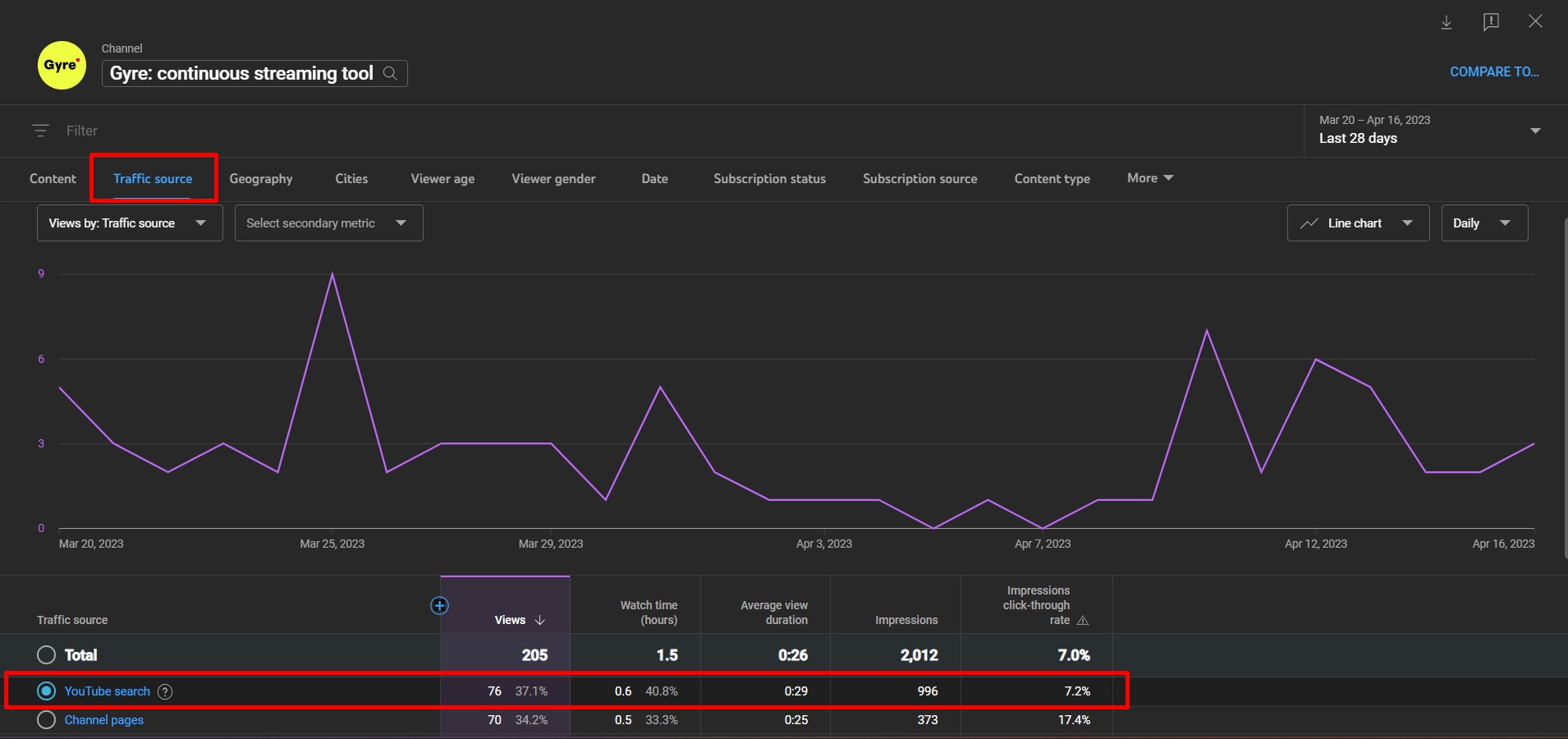
As a result, you’ve received a list of topics to focus on soon and an understanding of the viewer's behavior while viewing your content.
Optimize existing videos on the channel
The next step is optimizing existing video content on your YouTube channel. Edit each video's and channel metadata: covers, title, description, and tags. It will give an extra push to get your channel re-indexed by YouTube algorithms. In turn, this reactivates the delivery of videos to a new audience.
The metadata optimization algorithm is as follows:
- Write keywords according to the video topic.
- Make a semantic core.
- Write an exciting and attractive title for the video clip based on new keywords.
- Make a list of your tags (i.e., key queries of the semantic core).
- Rewrite the video description according to the new keywords.
- Create a new thumbnail that perfectly complements the title.
You should give your video thumbnails maximum attention. The higher their conversion, the faster you will be at the top of the search. Simply put, the more users click on your video thumbnails, the more often YouTube suggests your video to new viewers.
IMPORTANT! If you have videos on your channel tied to a specific date, we recommend updating them. Offering the audience irrelevant, decades-old content is a bad idea.
Using relevant keywords is an effective way to improve the delivery of your video content to viewers. It’s important to enter them in all metadata using organic and plain language. One of the easiest ways to include keywords is to add them to the title of your video's time codes.
Here is an article about the connection between CTR and metadata. And here is a guide to working with channel tags.
To further optimize the channel, use additional video customization tools — add cards and end screens.
You can add up to 5 cards in one video. Here are the obvious advantages:
- Tips with a link to a playlist or video on a similar topic offer the viewer additional context.
- Polls are an opportunity to find out the audience’s opinion or to entertain them.
- You can add a link to a site in your tips if you connect it to the channel.
Instead, end screens help repeatedly immerse viewers in the channel content. You can customize the display in the end screens, the most recent releases on the channel, or those that match the metadata as much as possible.
IMPORTANT! You can add end screens 20 seconds before the end of the video clip. To ensure your viewers see them, try not to say goodbye before end screens appear. The ideal option is to include the appearance of both cards and end screens in the script of your video clip.
Upload Regularly To Your YouTube Channel
The cornerstone of YouTube promotion is fresh, high-quality, and helpful content. So if you're trying to get your channel back up and running, post new videos regularly and as often as possible. YouTube algorithms need to see that you are steadily developing your channel. In addition, it encourages viewers to return to your channel repeatedly to discover something new and exciting.
The frequency may change according to the channel's niche: if you have an entertainment channel prepare for daily posting, and others publish content every three days. You should test out this rhythm for at least two months. Next, we advise you to post content twice as often as usual (instead of 4 videos per month — 8).
By the way, we described a secret method of using continuous streams to redirect traffic to the premiere of new content and drive more reach in the first hour after publication.
IMPORTANT! One of the fastest ways to increase channel activity is to publish 1-2 videos daily in the Shorts format. If your main videos are 10-15 minutes long, then videos of about a minute will be much easier to retain viewers' attention. But it's worth remembering that as of April 2023, the viewer channel retention rate is calculated on average across all content formats so that many Shorts can reduce it. But the developers of the YouTube platform know this problem and are solving it. So we’re crossing our fingers and waiting.
In Summary
Restoring high activity on your YouTube channel is painstaking work that authors must do in several directions simultaneously:
- Analyze the niche and competitors' channels in detail. It will help fill the channel with current topics, formats, and trends.
- Investigate the current channel status. Remain only essential points for your channel’s developing strategy.
- Optimize existing content on your channel: update metadata to re-index and make the most of YouTube's tools so that viewers enjoy watching your content for as long as possible.
- Considering the first three points, regularly fill the channel with fresh and viral content.


